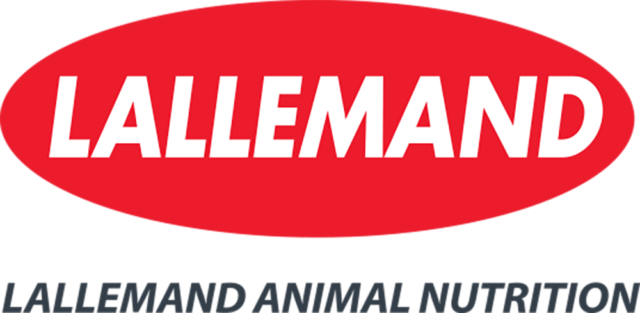Between the years of 1992 to 2018 in Ontario and British Columbia alone, there were 58,950 reported workplace incidents involving ladders. It is important to be aware of the hazards when using any type of ladder. Serious injuries can occur, especially if you fall from a ladder, regardless of the height.
Several common types of ladders include:
-
Extension or straight – These ladders are commonly used when you need to reach a higher point. Straight ladders must be placed on a firm, flat surface before use. You should always ensure the ladder is locked on both sides before ascending. When setting up a straight ladder, follow the 4-to-1 rule, 1 foot back for each 4 feet up. The top of the ladder should extend 3 feet above the point of contact. As with any portable ladder, it is good to have a person stand at the bottom of the ladder to keep it steady.
-
Fixed access – These ladders are used when regular access is required above or below floor level. All fixed access ladders must be secured to a solid structure. These types of ladders must also meet requirements for rest platforms, rungs and safety cages depending on their height and purpose. When working above 3 metres, it is required that the person wear fall arrest/protective equipment. When ascending or descending on a fixed access ladder, you must remain within the guarded areas when working at heights. Additionally, a person on the ground must stay in contact with the person climbing at all times.
-
Step ladder or A-frame – This type of ladder is a very commonly used ladder that most people have in their homes and around their farm. It is important to remember that you must never use a step ladder as a straight ladder. When setting up a step ladder, spread the legs completely until the spreaders lock in place. Ensure the step ladder has nonslip feet and is used on a stable, flat surface. It is imperative that you do not stand on the top shelf of a step ladder.
- Step stools – A step stool may be a plastic or metal stool that is round or square, a foldable ladder or a set of mobile steps that does not have more than three steps and the top step is no more than 3 feet. A foldable ladder which locks into place and contains rails that extend above the top step is the preferred type of step stool. This style offers significantly more stability and support than a round or square stool. All steps can be climbed on this type of step stool as long as the side rails continue above the top step.
When deciding on what type of ladder to use for a task, you must consider the correct type for the environment and the tasks that will be completed. Consider the required height, style, weight capacity and the environmental conditions in which the ladder is being used.
Instruction and training
Everyone using a ladder must understand the safety procedures and requirements. Supervisors must ensure employees are provided instruction on safe practices including inspection, safe use, maintenance and storage of the ladder. Anyone using a ladder that exceeds 3 metres must complete additional working at heights training.
Inspection
The ladder must be inspected before each use to ensure it is free from damage or missing parts. Inspect all components ensuring the following: Look that ladder components are free from cracks and/or broken pieces. Ensure steps and rails are in good condition. Check that the ladder’s locks are working and are in place as part of your pre-use inspection. Ensure the ladder’s feet are in place and in good condition. Finally, look to see that there are no missing bolts, connectors or other components. If any damage is suspected, immediately place the ladder out of service and report to your supervisor. Ensure the ladder is stored in a safe location when not in use to avoid damage.
Climbing or descending
When ascending or descending, always face towards the ladder. Do not carry large or heavy objects on a ladder; only carry objects that do not impair your ability to climb or descend, maintain balance or maintain clear visibility.
Additional safety procedures for using a ladder
Always ensure you are using the right ladder for the task. Do not use a ladder for anything other than its intended purpose. Always place the ladder on a stable surface and protect the base of the ladder from being hit. This can be done with pylons or having a person stand at the base of the ladder. Ensure your footwear and hands are free from mud, snow, grease or other slip hazards before using a ladder. Always maintain three points of contact and face the ladder when climbing or descending. Do not reach far away from the ladder to complete work off to the side or above the ladder; it is best to climb down the ladder, move it to the desired location, then ascend, rather than reaching too far over. Be aware of overhead hazards when moving, setting up and ascending the ladder. Use a spotter to hold the ladder when possible, but only one person is permitted on the ladder. Use two people when carrying large ladders. Ensure ladders are strapped and secure when transporting the ladder on the road.
Fall protection
Fall protection equipment must be used any time you are working over 3 metres above the ground, including when working on a roof or platform.
The Ministry of Labour-approved Working at Heights Training course must be completed by anyone working above 10 feet, and you must have your training certificate on-site. All working at heights regulations must be followed, including the use of fall protection equipment.
Fall protection equipment
A fall arrest system will consist of a:
- Full body harness with adequate attachment points. The harness must fit close to the body and be worn properly. The D-ring must be between the shoulder blades.
- Self-retracting lanyard equipped with a shock absorber or similar device.
- Anchor point that is rated and installed to be able to withstand the force of a fall.
- All the components of the fall protection system must meet the applicable CSA standards.
- The system must be set up so an employee cannot hit the ground or object below.
Fall protection inspections
Fall protection equipment must be inspected by a competent employee before each use. The inspection will include:
- Hardware (inspect hardware, including snap hooks, D-rings and buckles for damage, and check for sharp edges, corrosion, burrs, cracks and worn parts)
- Webbing (check for tears, abrasions, mold, burns, heavy soiling or discoloration, and chemical or heat damage)
- Cable (inspect for cuts, kinks, broken wires and fibers, corrosion, chemical contact and severely abraded areas)
- Labels (affixed and fully legible)
Defective fall protection equipment must be removed from service immediately and replaced. If any component has arrested the fall of an employee, it must be removed from service. Fall protection equipment must be maintained and stored in an area that will keep the equipment clean, dry and free from oils, chemicals, paints and excessive heat. Do not hang anything from fall protection equipment, as this can cause damage.








